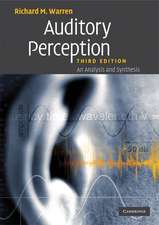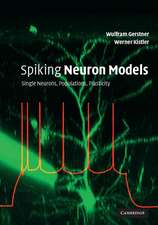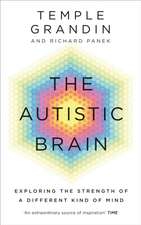Comparative Vertebrate Lateralization
Editat de Lesley J. Rogers, Richard Andrewen Limba Engleză Paperback – 17 iul 2008
| Toate formatele și edițiile | Preț | Express |
|---|---|---|
| Paperback (1) | 470.03 lei 6-8 săpt. | |
| Cambridge University Press – 17 iul 2008 | 470.03 lei 6-8 săpt. | |
| Hardback (1) | 960.68 lei 6-8 săpt. | |
| Cambridge University Press – 24 mar 2002 | 960.68 lei 6-8 săpt. |
Preț: 470.03 lei
Nou
Puncte Express: 705
Preț estimativ în valută:
89.97€ • 97.76$ • 75.62£
89.97€ • 97.76$ • 75.62£
Carte tipărită la comandă
Livrare economică 21 aprilie-05 mai
Preluare comenzi: 021 569.72.76
Specificații
ISBN-13: 9780521787000
ISBN-10: 0521787009
Pagini: 672
Ilustrații: 70 b/w illus. 20 tables
Dimensiuni: 148 x 228 x 18 mm
Greutate: 1.05 kg
Editura: Cambridge University Press
Colecția Cambridge University Press
Locul publicării:Cambridge, United Kingdom
ISBN-10: 0521787009
Pagini: 672
Ilustrații: 70 b/w illus. 20 tables
Dimensiuni: 148 x 228 x 18 mm
Greutate: 1.05 kg
Editura: Cambridge University Press
Colecția Cambridge University Press
Locul publicării:Cambridge, United Kingdom
Cuprins
Preface; Introduction; Part I. Evolution of Lateralization: 1. How ancient is lateralization? G. Vallortigara and A. Bisazza; 2. The earliest origins and subsequent evolution of lateralization R. J. Andrew; 3. The nature of lateralization in tetrapods R. J. Andrew and L. J. Rogers; 4. Advantages and disadvantages of lateralization L. J. Rogers; Part II. Development of Lateralization: 5. Behavioral development and lateralization R. J. Andrew; 6. Factors affecting the development of lateralization in chicks C. Deng and L. J. Rogers; 7. Ontogony of visual lateralization in pigeons O. Güntürkün; 8. Development of laterality and the role of the corpus callosum in rodents and humans P. E. Cowell and V. H. Denenberg; 9. Posture and laterality in human and nonhuman primates: asymmetries in maternal handling and the infant's early motor asymmetries E. Damerose and J. Vauclair; Part III. Cognition and Lateralization: 10. Evidence of cerebral lateralization from senses other than vision R. J. Andrew and J. A. S. Watkins; 11. Facing an obstacle: lateralization of object and spatial cognition G. Vallortigara and L. Regolin; 12. Laterality of communicative behaviors in nonhuman primates: a critical analysis W. D. Hopkins and S. F. Carriba; 13. Specialized processing of primate facial and vocal expressions: evidence for cerebral asymmetries D. J. Weiss, A. A. Ghazanfar, C. T. Miller and M. D. Hauser; Part IV. Lateralization and Memory: 14. Memory and lateralized recall A. N. B. Johnston and S. P. R. Rose; 15. Memory formation and brain lateralization R. J. Andrew; Epilogue; Appendix; Index.
Recenzii
'Andrew & Roger perform an enormous service in bringing data from animal behaviour, neuroanatomy and electrophysiology into contact with traditional zoological concerns such as genetics, embryology and population biology.' Journal of Animal Behaviour
'Whatever the outcome of the war, this book will be a key starting point for those trying to understand it (or perhaps to fight in it).' Annals of Human Biology
'Whatever the outcome of the war, this book will be a key starting point for those trying to understand it (or perhaps to fight in it).' Annals of Human Biology
Descriere
Compares brain lateralization among lower vertebrates, birds, nonprimate mammals and primates, including humans.












